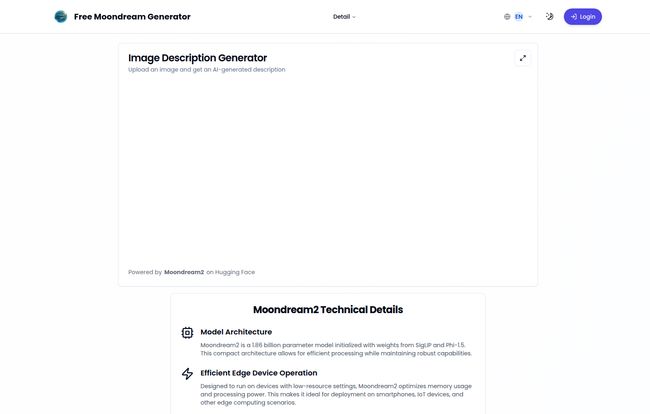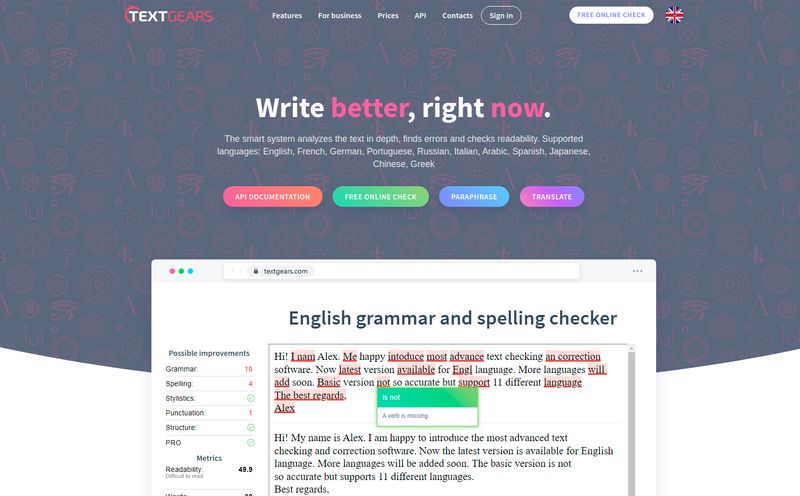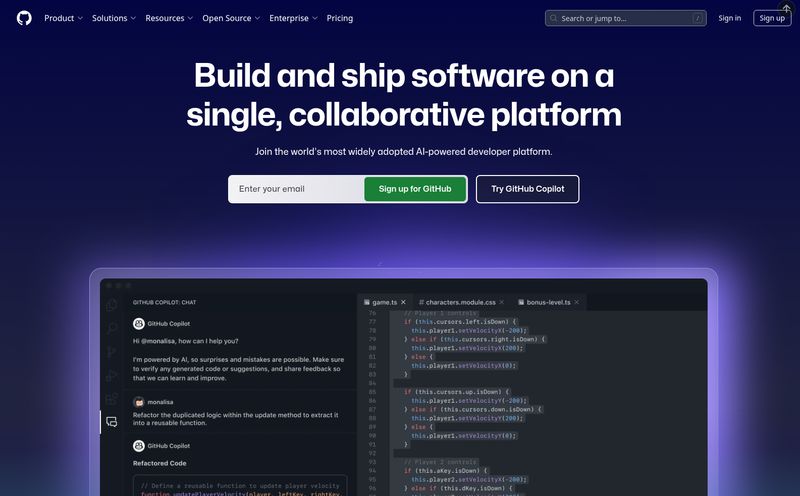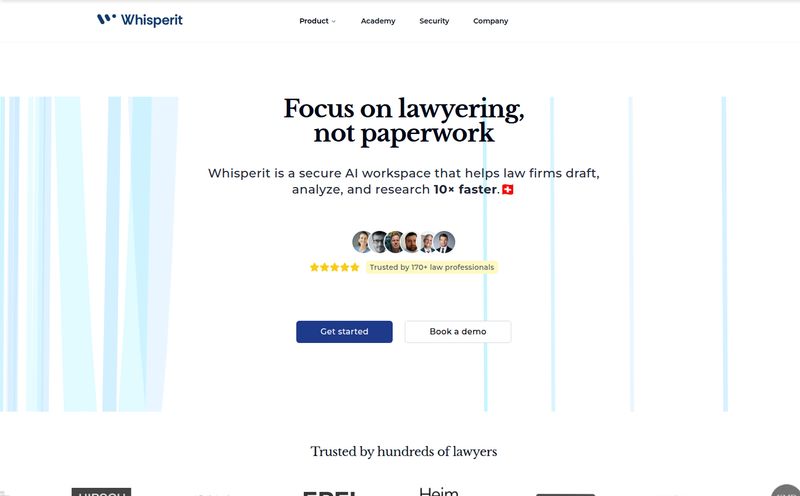Every other week, it feels like a new model drops that’s bigger, more powerful, with a parameter count that sounds more like a government's budget than a piece of software. We see the splashy headlines for GPT-4, Claude 3 Opus, and the like, and we get excited. I get it. I’ve spent countless hours pushing those models to their limits.
But lately, I’ve been asking myself a different question. What if the real revolution isn’t happening in the closely guarded data centers of Silicon Valley? What if the most exciting change is happening on a much smaller scale? What if the future of AI is fast, efficient, and lives right in your pocket?
That’s the exact thought I had when I stumbled upon the Free Moondream Generator. It's not trying to be the biggest. It’s trying to be the smartest, in a different kind of way. And for those of us in the trenches of SEO, content creation, and development, that might be a whole lot more useful.
So, What Exactly is this Moondream Thing?
In the simplest terms, the Moondream Generator is a tool that looks at a picture you give it and tells you what's going on. You upload an image, ask it a question like "Describe this scene," and it spits back a surprisingly detailed description. It’s powered by a vision language model (or VLM, for the acronym lovers) called Moondream2.
Think of it as having a tiny, incredibly fast art historian or a photo analyst living on your device. It's built on some pretty solid tech—a SigLIP image encoder and a Phi-1.5 language model—but you don't need to know the jargon. You just need to know it works. Oh, and did I mention its completely free to use? Yeah. That part’s kind of a big deal.

Visit Free Moondream Generator
The Big Deal About "Edge Compatibility"
Now, here’s where things get really interesting. The Moondream Generator’s main claim to fame is its ability to run on edge devices. That sounds technical, but it’s simple: an edge device is the gadget you’re probably reading this on right now. Your smartphone, your laptop, a smart camera, an IoT sensor. These are all devices at the “edge” of the network.
Most of the big-name AIs are like giant power plants. They need a massive, constant connection to a cloud server to do their thinking. You send a request, it travels to a data center hundreds of miles away, a supercomputer crunches the numbers, and it sends the answer back. Moondream2 is different. It’s more like a solar panel with a battery pack. It's small and self-sufficient enough to do its work right there on your device, no constant internet lifeline required.
This has some massive implications:
- Speed: There’s virtually no lag. The processing happens locally, so the response is almost instantaneous.
- Privacy: This is huge. If the AI is running on your device, your sensitive images don't need to be uploaded to a third-party server. For applications handling private documents or personal photos, this is a non-negotiable feature.
- Accessibility: Got spotty wifi? No problem. An app powered by this kind of model could still function perfectly offline, which is a game-changer for people in rural areas or just riding the subway.
Moondream2 vs. The Titans: A David and Goliath Story
Okay, so how does this little guy stack up against the giants like GPT-4V? The platform itself puts the comparison front and center, which I respect. It’s not trying to hide anything. Here's my breakdown:
| Feature | Moondream2 | GPT-4V / VLLaVA |
|---|---|---|
| Model Size | Tiny (1.86 Billion parameters) | Colossal (7 Billion to an estimated 1.7 Trillion+) |
| Where it Runs | On your device (Edge) | In the cloud |
| Best For | Fast, specific tasks: alt text, object ID, document reading | Complex reasoning, creative interpretation, detailed analysis |
Looking at this, it's easy to think Moondream2 is just... less. But that's the wrong way to look at it. It's not a worse version of GPT-4V; it's a different tool for a different job. You wouldn't use a sledgehammer to perform surgery, would you? GPT-4V is the sledgehammer, perfect for breaking down complex, abstract visual problems. Moondream2 is the scalpel—precise, fast, and perfect for targeted tasks.
Sure, with only 1.86B parameters, it might not catch the subtle emotional undertones in a Renaissance painting. But will it accurately identify a golden retriever catching a frisbee in a park for your blog's alt text? Absolutely. And it'll do it faster and cheaper (as in, free) than anything else out there.
Putting It to the Test: What Can You Actually Do With It?
This is where the rubber meets the road. Abstract ideas are great, but how does this help me, an SEO and content person, get my work done? I can think of a few ways.
Generating Alt Text for SEO on the Fly
I once had a client with a library of over 10,000 product images, none with proper alt text. The task of writing it all manually was so daunting they just... didn't do it. A tool like the Moondream Generator is the perfect solution. You could script it to run through an entire media library, generating accurate, descriptive alt text that improves both SEO and accessibility. It’s not just about keywords; it's about making the web usable for everyone, and this lowers the barrier to entry significantly.
Understanding Documents and Screenshots
This feature is a low-key powerhouse. We've all been there: someone emails you a screenshot of an error message or a photo of a whiteboard from a meeting. Instead of manually typing everything out, you can just feed the image to Moondream. It's surprisingly adept at pulling text and even understanding code structure from an image. For developers debugging or teams trying to digitize notes, this is an incredible time-saver.
Powering Smarter Mobile Apps
For the app developers out there, the possibilities are wild. Imagine a travel app that can identify a landmark from your camera, offline. Or a retail app that lets you take a picture of a pair of shoes and find similar items in stock, without ever sending your photo to the cloud. Because Moondream2 is so lightweight, it makes these once-futuristic ideas practical and achievable for smaller teams and indie developers.
The Burning Question: What's the Catch? (And the Price)
The price is my favorite part: it's free. For developers and tinkerers, you can access it through the API or even run the model locally from its Hugging Face page.
So, what’s the catch? The catch is simply managing your expectations. This is not an all-knowing oracle. It’s a specialized tool. Because the model is smaller, its knowledge base isn't as broad. Its performance will vary compared to the giant models. It excels at direct, factual descriptions—
A person wearing a red jacket walking a dog on a leash
—but might struggle with more abstract prompts like
What is the emotional state of the person in this photo?
But that's not a flaw, it's a design choice. It’s built for efficiency, not for philosophical debate.
My Final Thoughts: Is the Moondream Generator Worth Your Time?
Without a doubt, yes. For me, the Free Moondream Generator represents a much-needed shift in the AI conversation. It proves that innovation isn’t just about scaling up; it’s also about scaling smart. It’s about creating tools that are accessible, private, and genuinely useful for everyday problems.
It’s a reminder that the right tool for the job is often the simplest one. It might not write a viral marketing campaign based on a photo of your lunch, but it will tell you exactly whats in the photo, and sometimes, that’s all you need. It’s a practical, powerful, and promising piece of technology, and I for one am excited to see where it goes next.
Frequently Asked Questions (FAQ)
- What is the Free Moondream Generator for?
- It's an AI tool that uses the Moondream2 model to analyze and describe images. It's great for generating alt text, understanding the content of pictures, and extracting text from documents or screenshots.
- Is Moondream2 really free to use?
- Yes, the model is open-source and the generator platform provides free access to its API. This makes it incredibly accessible for developers, students, and small businesses.
- How does Moondream2 compare to GPT-4V?
- Moondream2 is much smaller and designed to run on local devices (edge computing). It's faster for specific tasks like description. GPT-4V is a much larger, cloud-based model capable of more complex reasoning and creative interpretation, but it requires an internet connection and is slower.
- What are "edge devices" and why do they matter for AI?
- Edge devices are your personal electronics like phones and laptops. Running AI on them means faster speeds, better privacy (data stays on your device), and the ability to work offline.
- Can I use this for my business or website?
- Absolutely. One of the best use cases is automating the creation of SEO-friendly alt text for your website's images, which can save a massive amount of time and improve your site's accessibility.
- What kind of images work best?
- Clear, straightforward images with distinct subjects work very well. It's also quite capable of reading text within images, such as screenshots, receipts, or signs.
Reference and Sources
- Hugging Face: vikhyatk/moondream2
- GitHub: vikhyat/moondream
- Moz SEO Learning Center: Alt Text



